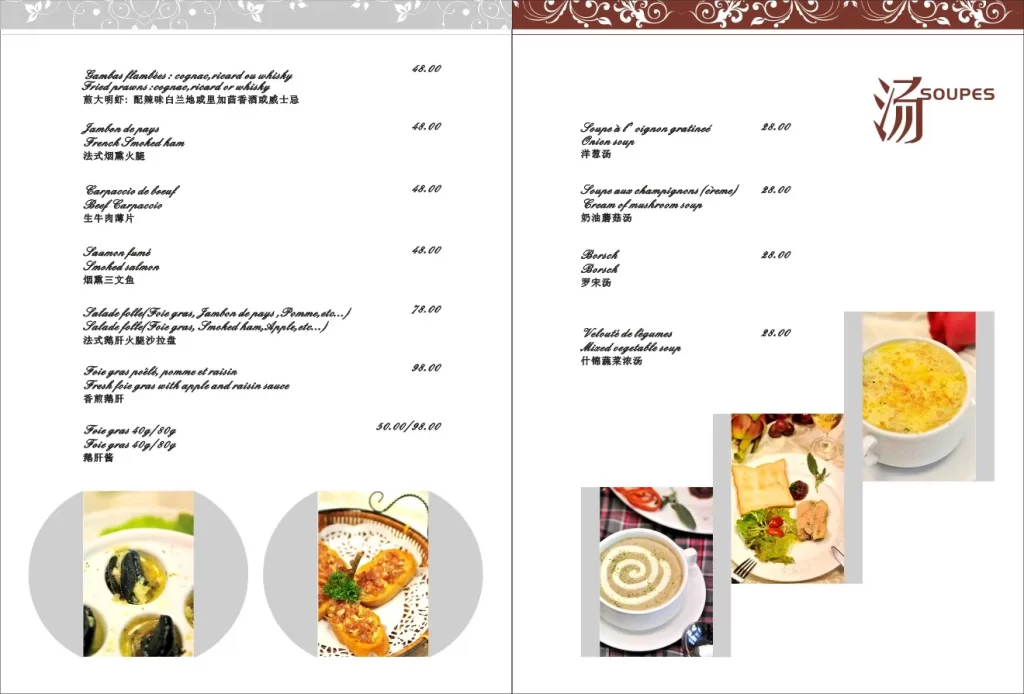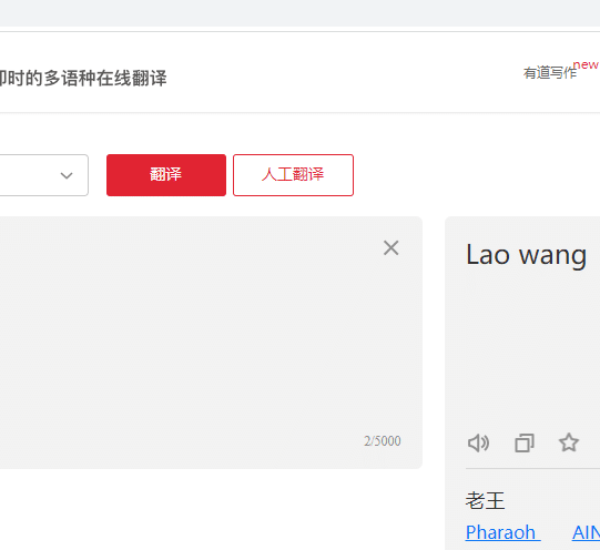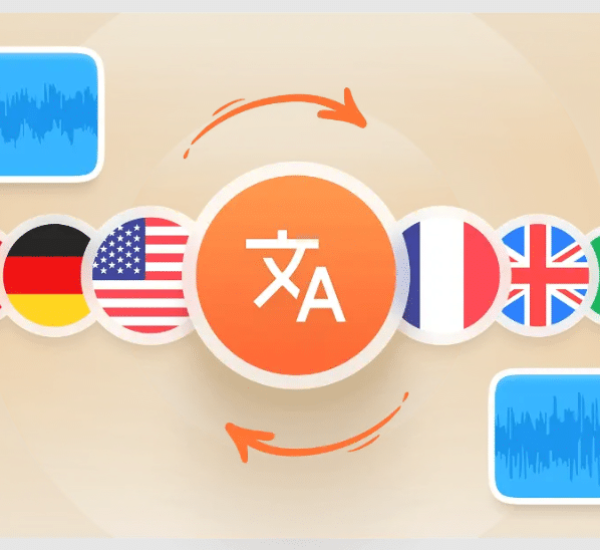Recently updated on February 21st, 2024 at 08:04 pm
Travelers who venture abroad know how frustrating it can be to eat in restaurants that do not offer their menus in languages other than their native language. And with the tourism industry being so competitive nowadays, any restaurant that does not meet customer expectations quickly faces customer dissatisfaction.
If you are in the restaurant business and part of your international customers are Chinese, translating restaurant menu into Chinese is definitely a must so that the customers can understand the dishes, specialties, and drinks that you offer.
Is It Important to Translate Restaurant Menu into Chinese?
With menu in Chinese, the Chinese-speaking tourists will be able to understand the dishes and drinks that your restaurant offers. Imagine tourists strolling down the street after a full day’s hectic trip searching desperately for a restaurant without having made a prior reservation. One restaurant has a menu in Chinese and another without, which would they choose?
Very probably, they would prefer the establishment in which they can perfectly understand the menu and they know that they aren’t going to “eat blindly”.
In addition, many Chinese tourists plan their holidays in advance, searching online travel guides, blogs, and tourism websites or directly on Google. For that reason, if your restaurant provides information about its food offerings in Chinese, the probability that they opt for your business increases considerably.

4 Benefits of Restaurant Menu with Chinese Translation
There’re many perks when it comes to translating restaurant menu into Chinese.
#1 To Create a Good First Impression
Making a good first impression for any business is crucial. And for any restaurant’s business, menus are usually the first thing your customers interact with when choosing a restaurant. A menu that foreign customers can understand builds trust immediately and can thus often be the main decisive factor in choosing a hotel restaurant over numerous other options that are available to tourists.
#2 To Expand Customer Base
People nowadays travel more often and further away from their home country than ever before, and the potential for restaurants to attract Chinese customers is huge – and by providing menus in Chinese restaurants can definitely expand their customer base greatly.
#3 To Increase Revenue
Since investment in translating menus into Chinese is very small compared to the potential of increasing revenue by offering services to Chinese tourists, it certainly doesn’t pay off to be too tight in this area.
#4 To Maintain a Good Reputation
Internet is a great tool for tourists to share the experience of their travels with the world. But unfortunately, if their experience is bad, it also poses a serious threat to the reputation of their chosen service providers, which means it’s very likely some of them might leave negative online reviews that would ruin the reputation of the restaurant.
Translating Restaurant Menu into Chinese – 4 Important Tips
The menu is usually the first thing customers are interested in when choosing a restaurant. The translation of a menu is meant to facilitate the customers’ satisfaction with the restaurant and the work done by the wait staff or anyone working there, so it’s important to translate a menu with the help of the best professionals.
Here’re a few tips to translate restaurant menu into Chinese.
Translation of the Ingredients

The translation of the ingredients and dishes must be perfect, and the information must be checked by several local experts.
Accurate translation of the ingredients is vital to avoid food allergies. In terms of allergies, which are diverse or varied (to lactose, fructose, certain vegetables or fruits). A bad translation can cause problems for both the guest and the business (in the first case, to their health; in the second, for possible violations).
💡 The translation professional should pay special attention to all the ingredients that don’t have an equivalent translation.
💡 In addition, some ingredients might have multiple names in English but only one name in Chinese. Example: Cilantro vs. Coriander (In English, cilantro refers to the leaves, while coriander refers to the seeds of the same plant. In Chinese, a single term (香菜, xiāng cài) is often used for both, creating a potential source of confusion.)
Translation of the Names
The perfect presentation of dishes is not enough if the restaurant menu is not capable of drawing in the client. And although it may seem trivial, it isn’t enough to simply translate the menu. It is also fundamentally important to translate the daily menu or seasonal specialties because these are typically the best offerings of any restaurant.
Menu Design and Formatting
Although it may seem insignificant, menu formatting is a vital component of any translation or localization project as it influences the perception of the quality of the restaurant and food.
💡 If your menus are formatted carefully, your customer’s attention would be geared towards specific items in the menu, automatically leading to purchase and consumption.
Food and Culture Should Go Hand in Hand
Food is the gateway into all cultures and the best way to bring people from different backgrounds together. Restaurant menu translation requires a wide understanding of the gastronomy and culture of the country and the public to which it is directed.
💡 Therefore, the task of translating restaurant menus into Chinese must be handled only by a professional tourism translation service provider who perfectly understand both cultures and languages.
Frequently Asked Questions
Is it important to use a professional translator for a restaurant menu?
Yes, using a professional translator can help ensure that the translation of your restaurant menu is accurate and of high quality, which can help improve the customer experience and increase customer satisfaction.
Should I use traditional or simplified Chinese for my restaurant menu?
If your restaurant is in a location with a lot of tourists from mainland China, it would be a good idea to use Simplified Chinese. If your restaurant is in a location with a lot of expats from Taiwan or Hong Kong, you might want to use Traditional Chinese.
How do I handle dishes with unusual or hard-to-translate ingredients on my Chinese menu?
If you are offering dishes with ingredients that are not commonly found in Chinese cuisine, it can be a good idea to provide a brief description of the dish in English as well as its Chinese translation.

Translator
Ouyang is a seasoned Chinese translator with 13 years of experience. With proficiency in translating for tourism, cosmetics, textiles, electronics, footwear, kitchenware, legal fields, and more, she helps businesses thrive in the Chinese market. She holds a bachelor’s degree in English from the Guangdong University of Foreign Studies.



